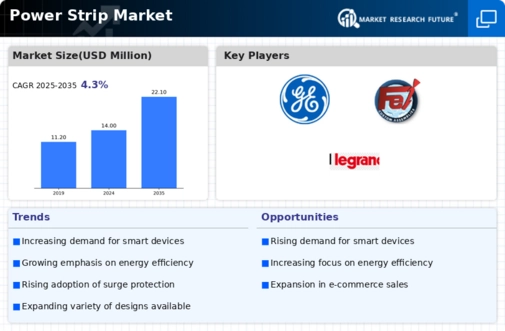Market Share
Power Strip Market Share Analysis
Over time, power strips have undergone significant advancements, driven by factors such as population growth and economic development in developing nations. The heightened demand for electronic devices correlates with improved living standards, propelled by the rising disposable income of individuals worldwide. Consequently, there has been a substantial increase in both expenditure and consumption of electronic devices. In response to diverse consumer needs, numerous companies are directing their efforts towards innovating their products.
For example, the Syska SSE-EBW-0304 smart extension board represents a notable innovation. This product is designed to be compatible with virtual assistants such as Alexa and Google Assistant. It provides users with the convenience of controlling either a single socket or all sockets through voice commands. This illustrates the ongoing trend of companies adapting their power strip offerings to incorporate smart technologies and cater to evolving customer preferences.
Furthermore, the evolution of power strips extends beyond mere convenience to encompass energy-saving capabilities. Electricity research organizations, such as the National Renewable Energy Laboratory (NREL), advocate for the use of advanced power strips for optimizing energy consumption. NREL suggests employing different types of power strips based on the connected devices and the user's usage patterns. These include remote switch power strips, timer power strips, master-controlled power strips, activity monitor power strips, and masterless power strips. Each type is tailored to enhance energy savings by effectively managing power usage.
The incorporation of new technologies into power strips has not only improved convenience but has also paved the way for a more energy-efficient future. As users become more conscious of their energy consumption, the adoption of advanced power strips aligns with sustainability goals. The power strips equipped with features like remote control, timers, and activity monitoring contribute significantly to reducing unnecessary power usage, aligning with the broader global emphasis on energy conservation.
This shift towards technologically advanced and energy-efficient power strips creates a lucrative opportunity for the global power strip market's growth in the forecast period. As consumers increasingly prioritize smart and eco-friendly solutions, manufacturers are likely to continue innovating in response to these evolving preferences. This trend underscores the pivotal role that technology and sustainability play in shaping the trajectory of the power strip market.






Leave a Comment